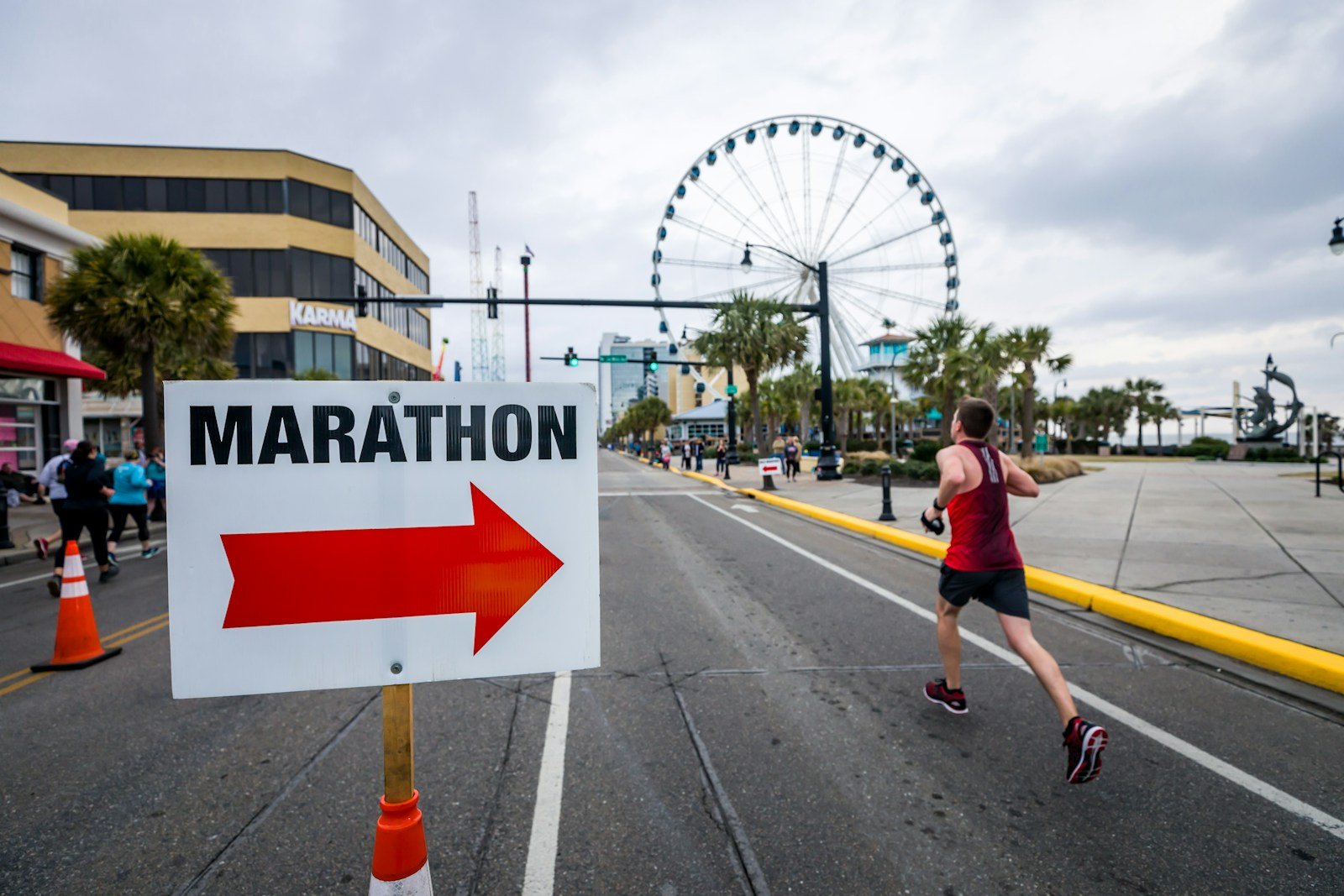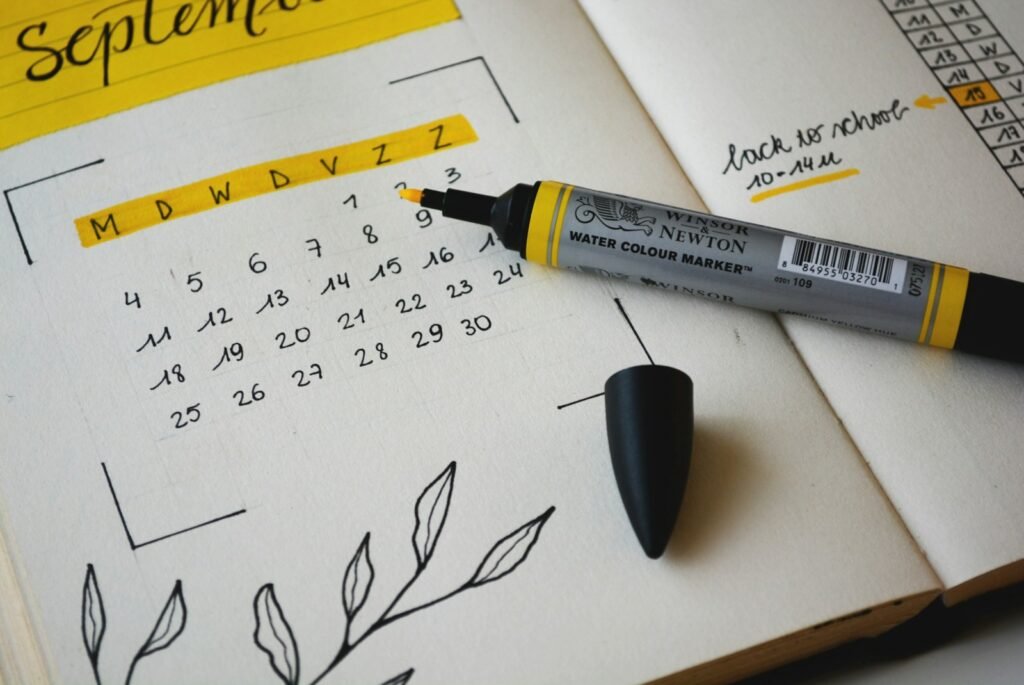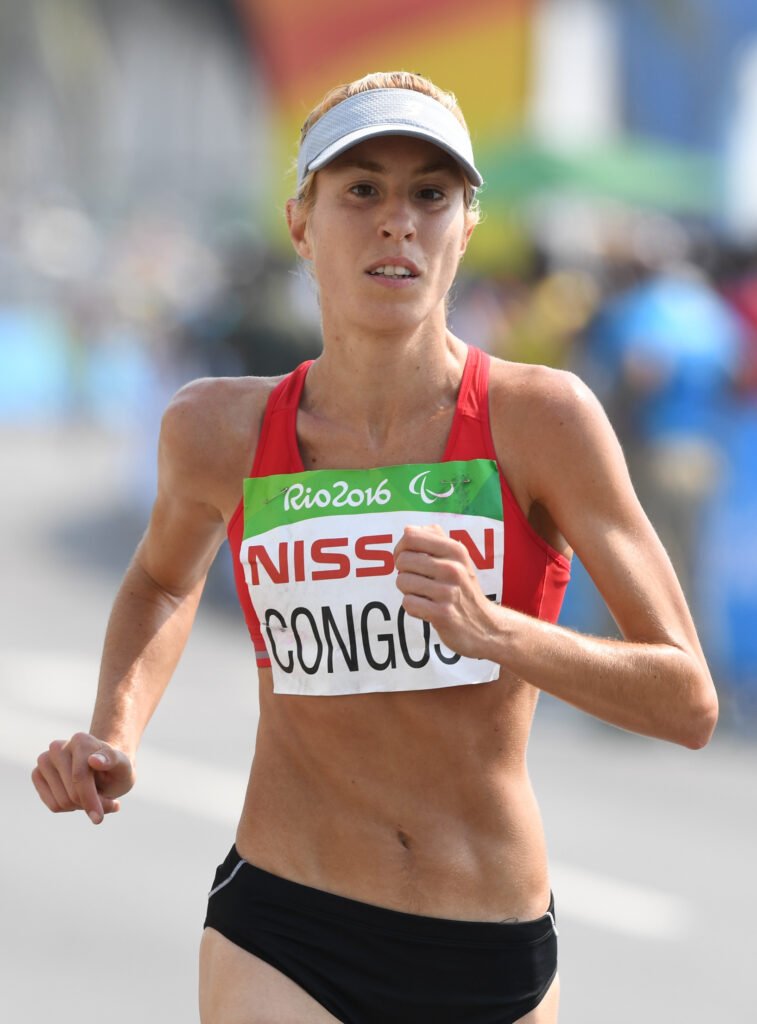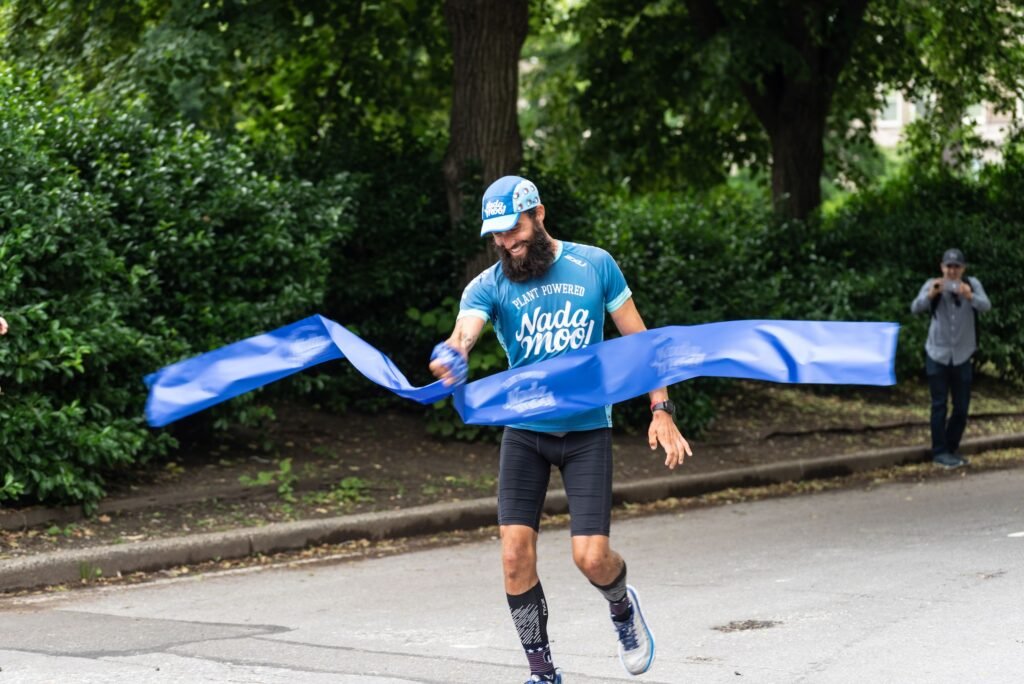In my opinion, recreational runners tend to fall into one of two categories: the all-in, bucket-list hero who signs up for one big race and trains like their life depends on it for a few months before slipping back to a “when I feel like it” basis… and the quiet grinder, who runs week in, week out, year after year. I’ve been both.
For years, I lived in a cycle of inspiration-fuelled sign-ups, chaotic training blocks, burnout, and therefore long, empty gaps afterward. But deep down, I wanted more. I wanted to be consistent. I wanted to be a runner, not just someone who ran.
If you’ve ever found yourself stuck in the boom-and-bust cycle of running motivation, or wondered what life might feel like if you just kept going, this post is for you. I will share my own personal journey towards consistency, the difference it has made in my life, and why that matters for you.
The Recreational Runner: 2 Distinctive Types

The Bucket-Lister
Also known as: The One-Hit Wonder, The Charity Charger, The Seasonal Strider, The Resolution Runner January: Running. February: Forgotten.), The Hashtag Hero (#MarathonMode #ICanDoHardThings)
Profile: This runner wakes up one morning, watches the London Marathon highlights with a hangover smoothie in hand, watches as a middle-aged-man dressed as a banana majestically bounds past the Cutty Sark, and suddenly proclaims, “I am going to run a marathon.” It’s a noble mission – usually sparked by pure inspiration, a desire to raise money for a good cause, or as a glorified item on a bucket list sandwiched between “learn Spanish” and “visit Machu Picchu.”
Traits:
- Owns exactly one pair of running shoes, bought in a panic from a discount sports store.
- Obsessively shares long-run selfies with motivational quotes like “Pain is temporary, pride is forever.”
- Peaks at 3 months of intense training before the event, then ghosts Strava for the next 9.
- Post-marathon recovery is in the form of several weeks of telling anyone who’ll listen that they “could definitely go pro if they just committed.”
- Their medal display is more about interior design than ongoing fitness.

The Year-Rounder
Also known as: Captain Consistency, The Pride of Parkrun, The Strava Sauvant, or That Guy Who’s ‘Just Ticking Over’ at 80km a Week
Profile: This is the runner who doesn’t need a race to lace up. They’re out in the dark, in the rain, when it’s 3°C and horizontal sleet is attacking their face – and they’re loving it. They knew what The Barkley Marathons was before it was cool. They don’t just run marathons; they train for them. With spreadsheets. And heart rate zones. And podcasts with titles like “Periodisation and Lactate Thresholds: The Science of Endurance.”
Traits:
- Owns more running shoes than actual casual shoes – each one with a specific “purpose.”
- Has a favourite GPS watch and a backup GPS watch.
- Has an irrational fear of “the grey zone”.
- Probably has a drawer full of energy gels “just in case.”
- Uses the term “training block” more than they use their own surname.
My Journey From Bucket-Lister To Year-Rounder
I may have gotten a bit carried away with the “Also Known As” section there (leave your best suggestions and traits in the comments)!
But here’s the thing: there’s no “better” type of runner. Bucket-Listers bring incredible energy to the sport, and often bring in millions for good causes in the process. They show up with heart, with purpose, and with a level of commitment that deserves serious respect. Training hard for a few months to take on something huge, whether for personal growth or to support a cause, is something to be proud of.
Not everyone wants or needs to run year-round. For many, a seasonal or goal-focused approach fits beautifully into their lives, and that’s more than enough.
But speaking personally, I always felt like a Bucket-Lister with the heart of a Year-Rounder – someone who loved running deeply but struggled to make it stick beyond the finish line.
I’d find myself inspired watching hours of London Marathon coverage, or Sir Mo gliding around the Olympic track, and before long I’d be signed up for a half marathon… a marathon… or on one particularly ambitious occasion, a 100km race (the Thames Path Challenge, to be exact). I’d throw myself into training for a few intense months, teeter on the edge of burnout, survive the race – and then avoid my running shoes like the plague, until the next spark of inspiration hit, and the cycle would begin again.
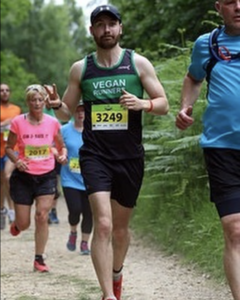
To use the specific example of the 100km race, I was coming from relatively very little running – probably around 24km a week. It was 2016 and with the youthful recognition that being in my 20’s I might just get away with it, I built up both intensity and volume aggressively, peaking at around 120km of total volume and a long run of 50km. Somehow, I did get away with it, and ended up having an amazing experience (and a decent performance, finishing in 6th overall).
On the way home from the race (where I may or may not have thrown up my post-race chips in a corner of the tube station), I remember feeling strongly that this time I would continue the momentum. I vowed to not let this new-found fitness slip away. It was a vow I had already made and broken too many.
But as I slowly recovered the ability to go down stairs without making involuntary sounds, and get to a place where I should have been ready to lace up the shoes again, I just couldn’t do it. I think it was partly the fact of no longer having that big scary goal to go after, but I think it was in much bigger part that my body and mind were just so much more beaten up by the rapid build up than I realised at the time. I had a complete aversion to running.
This went on for a few months with no real change until one day I just thought “well, if I sign up for another 100km race, maybe that will give me the jolt I need to get going again”, and so I did (Race To The Stones 2017).
To provide some necessary context, my dad had actually been diagnosed with cancer at the time and I desperately needed a distraction. Going from near-zero to 100k in just a few months again seemed like a worthy choice.
It worked, up to a point. I suddenly did feel motivated to train again, and was getting most of the sessions in consistently. The problem was that, understandably, given the situation, I was sleeping horribly. To distract my mind from my dad’s illness I would binge-watch Netflix at night until I would eventually pass out around 3am, and then try to wake up to run at 6am before work. Sometimes the attempt would be successful, sometimes not. On the “successful” attempts there were one or two occasions where I stopped for a mid-run panic attack (not exactly optimal for performance).
It comes as no surprise that this time around I did get injured.
Any time I would run more than a kilometre, a stabbing pain would flare up on the inside of my right knee. In the month leading up to the race I managed very little training, but I lied to myself that I would just turn up anyway, take in the atmosphere, hobble to the first aid station and call it a day.
Deep down I knew that was nonsense. I knew full well I was going to finish that race. When you are going through something that feels so helpless, you end up clinging to anything that you possibly can, and I just had this strong feeling that I needed to finish the race.
I actually started pain-free for the first 10km or so and honestly felt great, which was the only encouragement I needed to keep going. But gradually over the next 20km the pain and the familiar accompanying hobble returned. I made it to about marathon distance before I just couldn’t bear the pain anymore. I slowed to a walk and instantly the floodgates opened and the tears started streaming down my face.
All the emotion that I had been distracting myself from over the past few months all came to the fore in that moment. Over the next few minutes I purged, until suddenly a softly-spoken but strong-as-an-ox voice popped up in my head again, saying “finish the race”. With emotions shredded, a wave of determination came over me. I couldn’t run, but I could walk, and so thats what I did.
With nothing but 60km of trail laid out ahead of me, I finally took the time to process everything going on outside of running, and eventually passed the finish line in about 16.5 hours.
It turned out to be one of the most beautiful and profound experiences of my life, but one that really took its toll.
I barely ran at all – for the next 5 years or so. Among my dad’s illness (he battled like an absolute champion but eventually passed away a few days into 2019), the burnout, injury, and eventually moving to Spain and starting a family, running became something that I USED to do.
But now past the initial difficult baby and toddler phase (if you know, you know), and with the necessary healing (physical and emotional) done, I have slowly found my way back to running.
For the first time, I have finally found that illusive consistency, and know in my heart that I am a runner for life now. I am finally a Year-Rounder, and can honestly say that I have never had such a good relationship with running.
What Changed, And Why Does It Matter?

So, what’s the takeaway? What finally helped me shift from being a sporadic runner to someone who runs year-round – not out of pressure or to escape emotional pain by causing physical pain, but out of joy?
There were some practical changes for sure (check out my other article for those). But here, I want to focus on the mindset shifts – the less tangible, but equally important pieces.
- Redefining Success
I used to believe being a “real” runner meant chasing ultras, marathons, medals – something big. But that mindset put me on a cycle of burnout. It wasn’t sustainable.
What changed? I let go of that pressure. Now, success means getting out for a 30-minute trail run before my daughter wakes up. Or enjoying a quiet run without thinking about pace. Running no longer needs to prove anything. It just needs to feel good in my body and my life.
Try this: Write down what “success” looks like for you right now – not what it used to be, or what Instagram says it should be. You might be surprised how freeing that is. - Discovering Intrinsic Motivation
I won’t lie – Strava Kudos and simply being able to tell people I had done an ultra used to fuel me more than I’d care to admit. But eventually, I found myself asking: If no one ever knew that I ran, would I still do it? And honestly, I now would. The hills where I live in Spain are stunning, and those sunrise runs are more rewarding than any race photo. I run now because it makes me feel calm and peaceful – not because of any external reward. - Slowing Down – Literally AND Mentally
One of the most powerful things I’ve done is slow down. No more beating myself into shape. I started listening to my body, backing off when I needed to, and giving myself permission to run easy (or not run at all) without guilt. And guess what? I started to love running again.
Try this: For your next few runs, ditch the watch. Run for feel, not for time. See what happens when you allow your body to lead rather than your expectations. - Running As A Way Of Life – Not A Goal
Don’t get me wrong – I still always like to have a race in the calendar and have goals for those races. But now that I’m a parent, my energy is finite. I had to choose: do I want running to drain me or support me?
By shifting my mindset from “training for peak performance” to “moving for my physical and mental health,” I found that running actually made me a better dad, partner, and human.
Try this: Think of running as something that fuels your whole life – not something you do in isolation. How can it help you show up better for the people you love?
Conclusion
Becoming a consistent runner didn’t come from crushing races or hitting perfect mileage. It came from letting go of pressure, showing up when it wasn’t glamorous, and finally recognising that running was something I get to do – not just something I train for.
The shift didn’t happen overnight, and life threw more than a few curveballs along the way. But finding consistency has given me more than fitness – it’s given me peace, identity, and joy.
If you’re stuck in the all-or-nothing loop, know that you don’t need to crush yourself to find your rhythm. Sometimes the most powerful step is simply showing up again – and letting that be enough.

